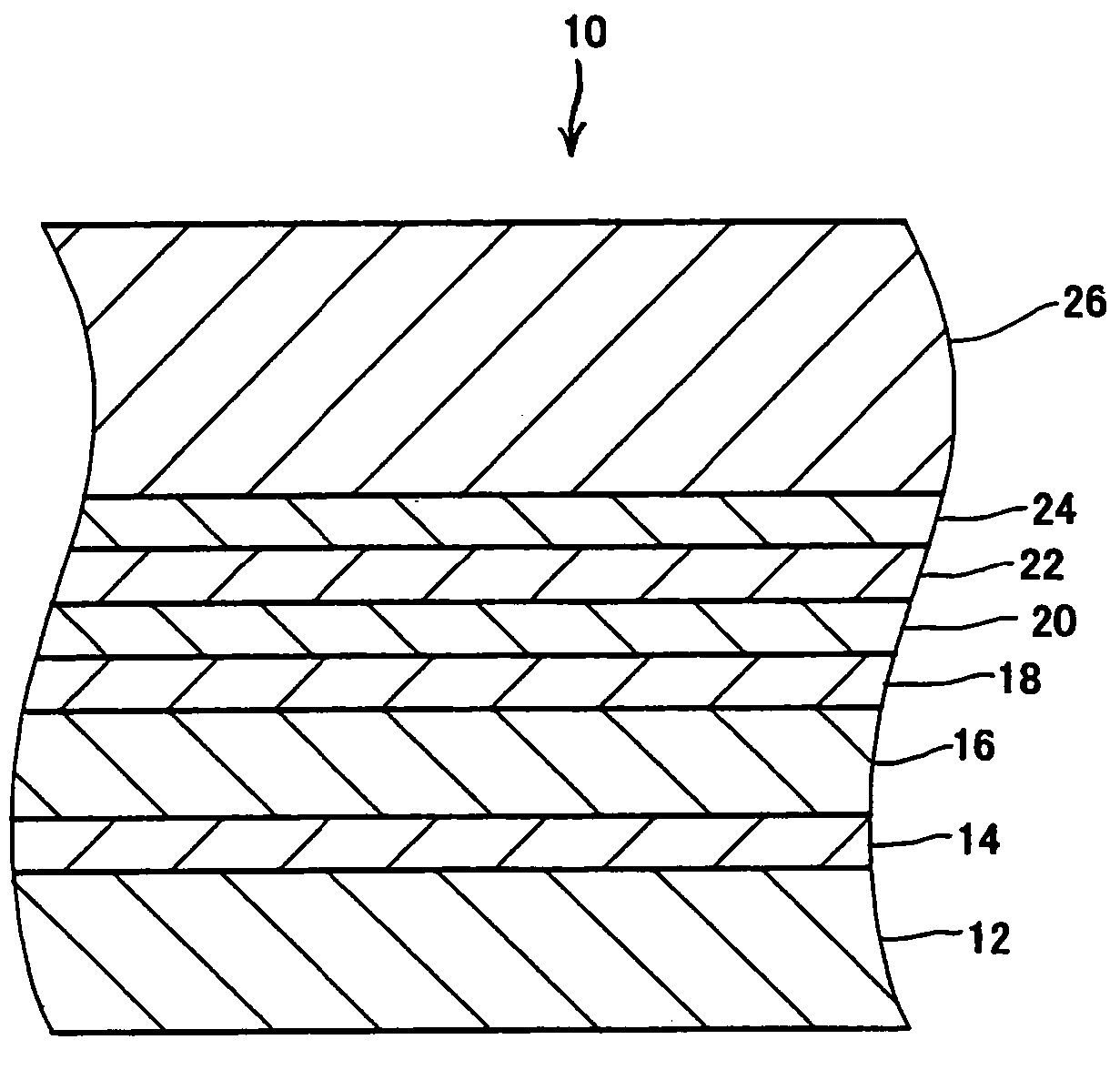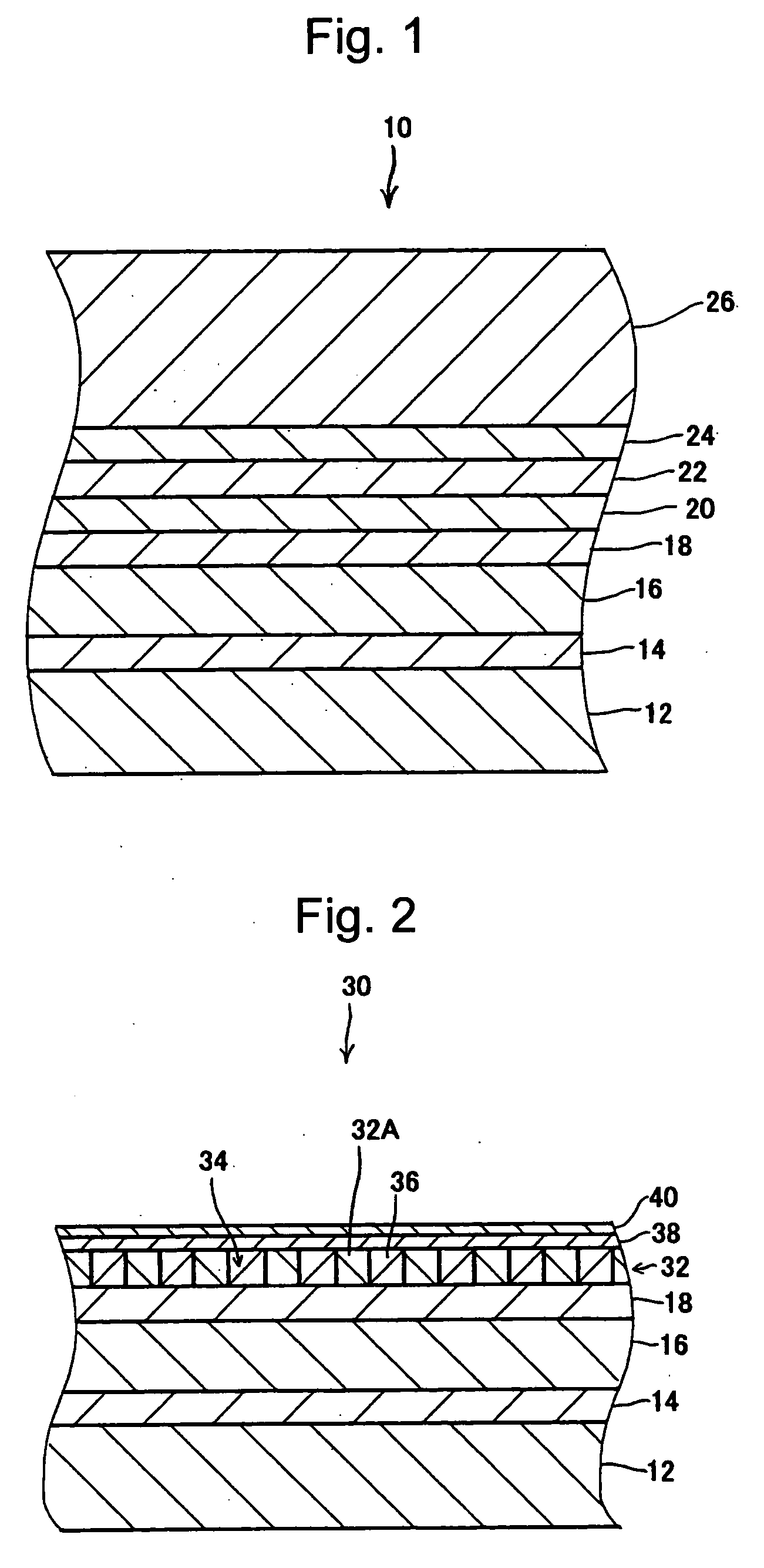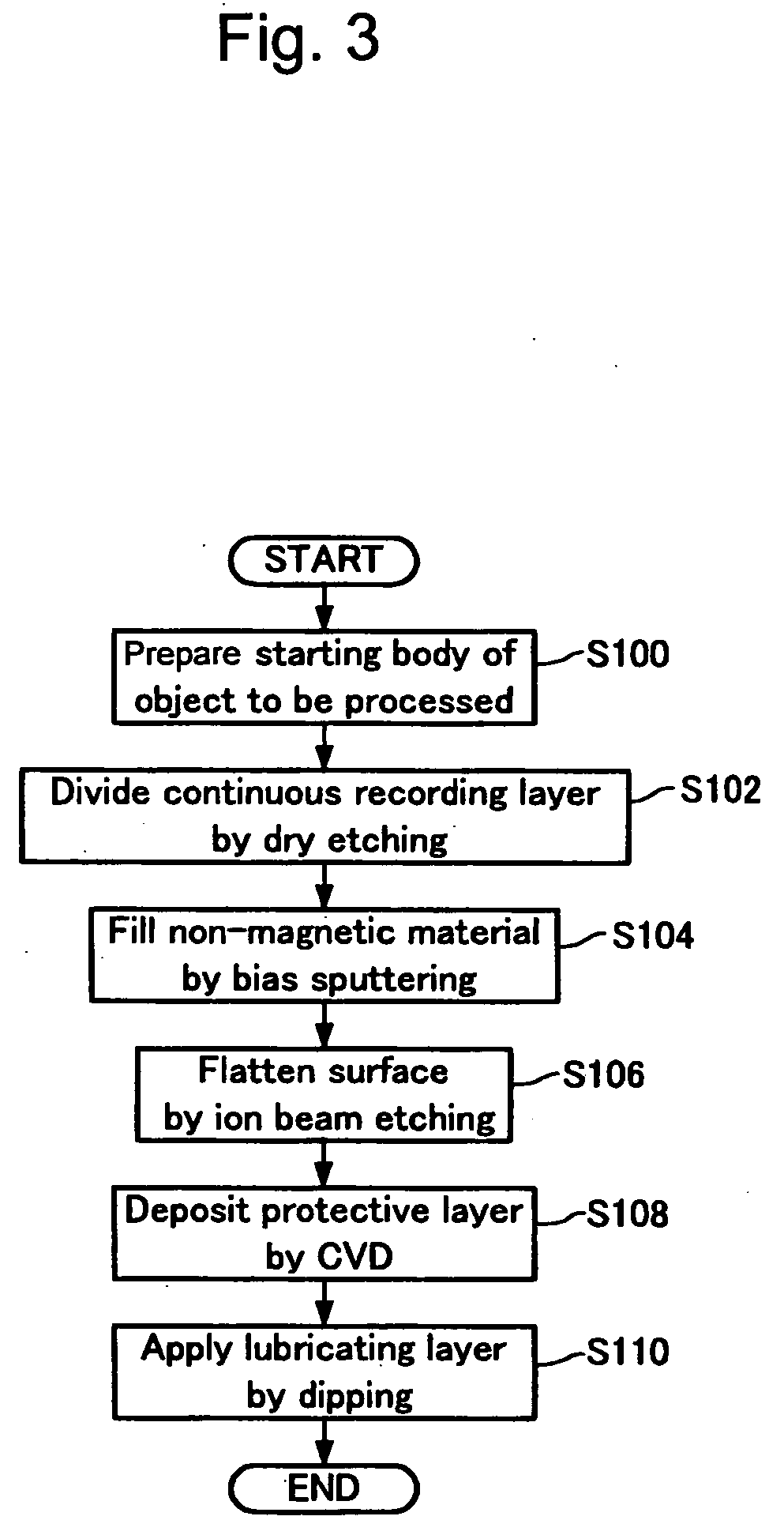Method for manufacturing magnetic recording medium
a manufacturing method and magnetic recording technology, applied in the direction of magnetic materials, magnetic bodies, and support parts, can solve the problems of difficult to precisely control the amount of processing (thickness) in the order of 1 to 2 nm, increase the density of the areal by a conventional improvement method, and the recording and reproducing characteristics become worse. , to achieve the effect of preventing the increase of the height difference, high flattening effect, and increasing the efficiency of the whole manufacturing process
- Summary
- Abstract
- Description
- Claims
- Application Information
AI Technical Summary
Benefits of technology
Problems solved by technology
Method used
Image
Examples
working example 1
[0091] The magnetic recording medium 30 was manufactured in a way of the foregoing first exemplary embodiment. To be more specific, the recording layer 32 was formed into the following concavo-convex pattern.
[0092] Pitch: 150 nm
[0093] Width of convex portion: 95 nm
[0094] Width of concave portion: 55 nm
[0095] Difference in the height between concave and convex portions: 20 nm
[0096] Then, the non-magnetic material 36 was deposited to a thickness of approximately 40 nm in the non-magnetic material filling step (S104) under the following conditions, to fill the concave portions 34 with the non-magnetic material 36. The thickness of the non-magnetic material described above is the distance between the most projecting portion in the surface of the deposited non-magnetic material 36 and the top face of the recording layer 32.
[0097] Input power: 500 W
[0098] Ar gas pressure: 0.3 Pa
[0099] Bias power: 250 W
[0100] Then, the non-magnetic material 36 above the recording elements 32A was ...
working example 2
[0111] As is described in the foregoing second exemplary embodiment, the gas mixture of Ar gas and C2F6 (ethane hexafluoride) was used as the processing gas for the ion beam etching in the flattening step (S106). The other conditions were same as those of the working example 1. Conditions in the flattening step (S106) were set as follows. Both of the etching rates of the non-magnetic material 36 (SiO2) and the recording element 32A are approximately 260 angstroms / min under the processing conditions according to the working example 2.
[0112] Quantity of flow of Ar+C2F6 gas: 11 sccm
[0113] Ratio of flow of Ar gas in processing gas: approximately 83%
[0114] Gas pressure: 0.05 Pa
[0115] Beam voltage: 500V
[0116] Beam current: 500 mA
[0117] Suppressor voltage: 400V
[0118] Incident angle of ion beam: +90 degrees
[0119] After the flattening step (S106), the surfaces of the recording layer 32 and the non-magnetic material 36 were observed by the AFM, and obtained the following results.
[012...
working example 3
[0129] As is described in the foregoing third exemplary embodiment, the reactive ion etching which used CO gas and NH3 gas as the reactive gas was used in the flattening step (S106), and also the non-magnetic material 36 was made of the composite material of SiO2 and C. The component ratio of the volume of SiO2 in the composite material was approximately 30%. The other steps were the same as those of the working example 1. Conditions in the flattening step (S106) were set as follows. In the processing conditions according to this working example 3, both of the etching rates of the non-magnetic material 36 (SiO2+C) and the recording element 32A are approximately 160 angstroms / min.
[0130] Quantity of flow of CO+NH3 gas: 100 sccm
[0131] Ratio of flow of CO gas in reactive gas: approximately 12.5%
[0132] Gas pressure: 1.0 Pa
[0133] Input power: 1000 W
[0134] Substrate bias power: 5.7 W / cm2
[0135] After the flattening step (S106), the surfaces of the recording layer 32 and the non-magnet...
PUM
| Property | Measurement | Unit |
|---|---|---|
| thickness | aaaaa | aaaaa |
| incident angle | aaaaa | aaaaa |
| incident angle | aaaaa | aaaaa |
Abstract
Description
Claims
Application Information
 Login to View More
Login to View More - R&D
- Intellectual Property
- Life Sciences
- Materials
- Tech Scout
- Unparalleled Data Quality
- Higher Quality Content
- 60% Fewer Hallucinations
Browse by: Latest US Patents, China's latest patents, Technical Efficacy Thesaurus, Application Domain, Technology Topic, Popular Technical Reports.
© 2025 PatSnap. All rights reserved.Legal|Privacy policy|Modern Slavery Act Transparency Statement|Sitemap|About US| Contact US: help@patsnap.com



